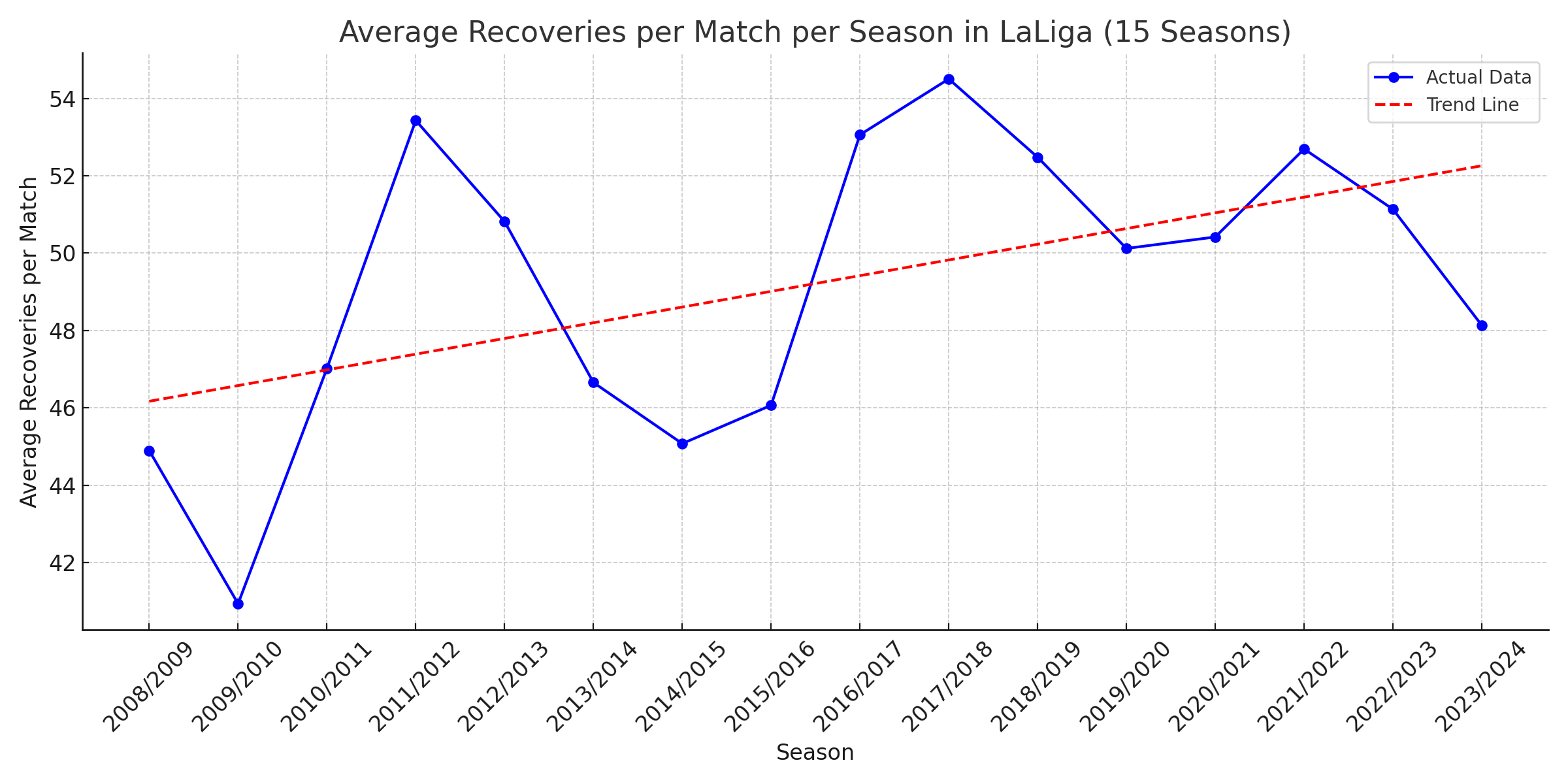
29 Jul Evolution of Ball Recoveries in LaLiga and Its Relationship with Increased High-Intensity Physical Performance
Abstract
Over the past fifteen seasons of LALIGA, we have observed a growing trend in the average number of ball recoveries per match. This analysis, based on internal data and the longitudinal study by Pons et al. (2021), suggests that this increase may be correlated with enhanced physical performance, particularly in high-intensity actions. Internal data confirms that the trend towards increased high-intensity actions has persisted, supporting the hypothesis that improved physical performance contributes to a higher number of recoveries.
Introduction
Modern football has evolved significantly, particularly in terms of intensity and physical demands. One key metric for assessing a team’s defensive performance is the number of ball recoveries. This metric not only reflects a team’s ability to regain possession but may also be influenced by physical performance, especially in high-intensity actions such as sprints and duels.
Methodology
Data from the last fifteen seasons of LALIGA was analyzed, focusing on the average number of recoveries per match. Additionally, the results of a longitudinal study examining physical performance in high-intensity actions (Pons et al., 2021) were considered. Internal data confirms the continued trend towards increased high-intensity actions.
Results
The data shows a notable increase in the average number of recoveries per match over the fifteen analyzed seasons. This increase is consistent with evidence of enhanced physical performance in high-intensity actions, as documented in the study by Pons et al. (2021). According to this study, high-intensity actions, including distances covered at high speed and sprints, have significantly increased, especially in the First Division.
Discussion
The correlation between the increase in recoveries and the rise in high-intensity actions suggests a possible causal relationship. Recoveries are often the result of effective pressing and won duels, both aspects enhanced by greater physical performance. It is plausible to infer that teams with greater physical prowess, capable of sustaining high-intensity actions, are more successful in regaining possession.
This trend may also be influenced by a tactical shift in modern football, where high pressing and intense play have become common strategies to quickly regain possession and create scoring opportunities.
Conclusion
The analysis of the last fifteen seasons of LaLiga reveals a clear upward trend in the average number of recoveries per match, correlated with an increase in high-intensity actions. This finding suggests that advances in physical performance, particularly in terms of high intensity, are significantly contributing to the improvement of defensive metrics such as ball recoveries. Thus, teams that can maintain high levels of physical intensity have a competitive advantage in terms of control and possession recovery.
References
Pons, E., Ponce-Bordón, J. C., Díaz-García, J., López del Campo, R., Resta, R., Peirau, X., & García-Calvo, T. (2021). A Longitudinal Exploration of Match Running Performance during a Football Match in the Spanish La Liga: A Four-Season Study. International Journal of Environmental Research and Public Health, 18(3), 1133. https://doi.org/10.3390/ijerph18031133


